Jews are the descendants of an ancient people called the Hebrews. In Biblical times, the Hebrews, who came to be called Israelites, lived in various locations, including the area that became known as Palestine, which now includes the state of Israel. However, their kingdoms fell to a series of conquerors, and the Jews scattered throughout the world. By the A.D. 700’s, they had established communities as far west as Spain and as far east as China.
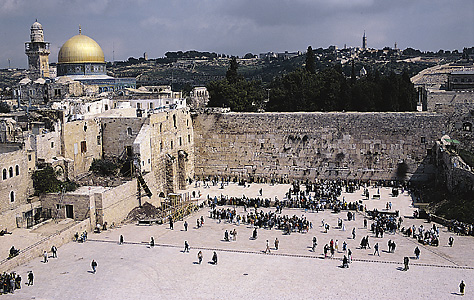
The Jews have had great influence on history. For example, they produced the Hebrew Bible, which became a cornerstone of the Christian and Islamic religions. But Jewish history has been full of tragedy. The Jews were a minority group almost everywhere they settled, and they often suffered persecution. During World War II (1939-1945), Germany’s Nazi government killed about 6 million Jews in the campaign of mass murder they called the “final solution,” later known as the Holocaust.
Jews always have considered the land of Israel their spiritual home. Israel lies in southwest Asia in a historic region often called Palestine. From the late 1800’s, many Jews from central and eastern Europe immigrated to Palestine. Many more Jews moved to Palestine following the Holocaust. The state of Israel was founded in 1948.
Because of the long and varied history of the Jews, it is difficult to define a Jew. There is no Jewish race. Jewish identity is a mixture of religious, historical, and ethnic factors. According to Jewish law, anyone born to a Jewish mother is considered a Jew. This system is called matrilineal descent. The Reform branch of Judaism also accepts as Jews children born to a non-Jewish mother and a Jewish father (patrilineal descent), as long as the children are raised Jewish. Individuals also may become Jews by converting (changing religion).
There are two broad groups of Jews—Ashkenazim and Sephardim. Most Ashkenazim are descendants of members of Jewish communities of central and eastern Europe. The Sephardim are descendants of Jews from Spain and Portugal. The term Mizrachim refers to Jews from other Mediterranean countries and the Middle East. Other groups of Jews include those descended from Jewish communities of Ethiopia and India.
There are about 15 million Jews in the world. The largest Jewish population—about 7 million—lives in the United States. About 6 3/4 million Jews live in Israel. Other countries with significant populations of Jews include Argentina, Canada, France, Russia, and the United Kingdom.
This article traces the history of the Jewish people throughout the world. For additional information about the history of Jews in Israel, see Israel and Palestine. For more information about the Jewish religion, see Judaism.
Early history of the Jewish people
Beginnings.
The Jews trace their ancestry to a shepherd named Abraham, who lived sometime between 1800 and 1500 B.C. in southern Mesopotamia (now southeastern Iraq). According to the Bible, God told Abraham to leave Mesopotamia and settle in Canaan, which consisted roughly of an area from east of the Jordan River to the Mediterranean Sea. There, Abraham’s descendants founded the people who became known as the Hebrews. Abraham, his son Isaac, and his grandson Jacob, also named Israel, are the patriarchs (fathers) of the Jewish people. The matriarchs (mothers) are Sarah (Abraham’s wife), Rebecca (Isaac’s wife), and Leah and Rachel (Jacob’s wives).
Jacob had 1 known daughter, Dinah, and 12 sons. In order of their birth, they were Reuben, Simeon, Levi, Judah, Dan, Naphtali, Gad, Asher, Issachar, Zebulun, Joseph, and Benjamin. In the early centuries of their history, the Hebrews were organized into groups that traced their descent to Jacob’s sons. They called themselves the Twelve Tribes of Israel, or Israelites. The Bible describes how Jacob’s son Joseph was sold into slavery in Egypt. Joseph’s wisdom and honesty enabled him to become prime minister to the Egyptian pharaoh. Joseph invited the Israelites to Egypt after a famine struck Canaan. The Israelites lived peacefully in Egypt for many years until a new pharaoh enslaved them.
The Exodus.
The Bible tells how a leader named Moses led the Israelites out of Egypt. According to the Bible, God helped the Israelites escape from slavery. The Jewish festival of Passover celebrates their deliverance, called the Exodus. Most scholars believe that the Exodus took place in the 1200’s B.C.
According to tradition, God dictated laws to Moses in a collection of teachings called the Torah after the Israelites left Egypt. Most scholars believe the Torah was written down much later. The Bible says that after receiving the Torah, the Israelites wandered in the wilderness for 40 years. Moses died before his people entered Canaan, but his successor, Joshua, led them into their old homeland. For about 200 years, the Israelites struggled to reestablish themselves in Canaan. They fought the Canaanites, the Philistines, and other peoples. This time is known as the period of the judges. It is described in the Book of Judges in the Hebrew Bible. The judges served as judicial and military leaders who united the Israelites in times of crisis. Deborah, Gideon, Samson, and Samuel were some famous judges.
The kingdom of Israel.
About 1025 B.C., the threat of warfare with the Philistines led the Israelites to choose a king, Saul, as their leader. Saul’s successor, David, unified the people and founded the kingdom of Israel. Under David and his successor, Solomon, the kingdom grew in size and power. David captured the city of Jerusalem from a people called the Jebusites and made it his capital. Solomon built a magnificent place of worship in Jerusalem. The Temple, known today as the First Temple, served as the center of religious life.

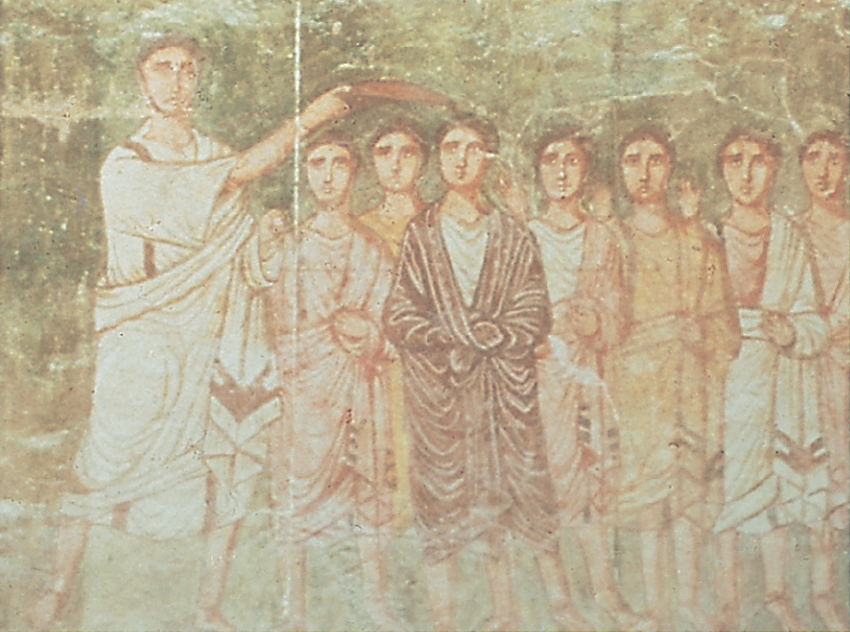
The divided kingdom.
After Solomon died in about 928 B.C., the 10 northern tribes split away from the tribes of Benjamin and Judah in the south. The northern kingdom continued to be called Israel and had its capital in Samaria. The southern tribes kept Jerusalem as their capital and called their kingdom Judah. The word Jew comes from Judah. The kings of Judah came from the house of David. In the kingdom of Israel, there were struggles for power between various families.
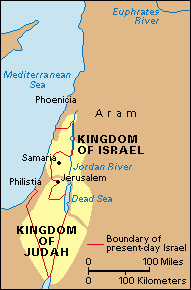
During this period, religious teachers called prophets developed many of the principles of Judaism. The Bible contains the teachings of the major prophets—Isaiah, Jeremiah, and Ezekiel—and 12 minor prophets.
Foreign domination.
In 722 or 721 B.C., the Assyrian Empire conquered the northern kingdom. The people of Israel were exiled and scattered. They disappeared as a nation and became known as the ten lost tribes.
In 587 or 586 B.C., the Babylonians conquered Judah, destroyed the Temple, and took many Jews to Babylonia as prisoners. This period is called the Babylonian Exile. Unlike the ten lost tribes, the people of Judah did not lose their identity. Inspired by the prophet Ezekiel, they continued to practice their religion. The first synagogues (Jewish houses of worship) probably were developed by the Jews in Babylonia.
In 539 B.C., King Cyrus of Persia conquered Babylonia. The next year, Cyrus allowed the Jewish exiles to return to Judah. Many Jews returned and rebuilt the Temple, which became known as the Second Temple. However, some Jews remained in Babylonia. This was the first time since the Exodus that Jews had chosen to live outside Israel. Later, the communities of Jews scattered outside Israel became known as the Diaspora.
The Hellenistic period.
Alexander the Great of Macedonia conquered the Persians in 331 B.C., and Judah came under his control. Alexander and his successors, the Ptolemies in Egypt and the Seleucids in Syria, brought Hellenistic (Greek) culture to the Jews. The Jews were allowed to follow their own religion. But in 168 or 167 B.C., King Antiochus IV of Syria tried to stop the practice of Judaism. The Jews, led by the warrior Judah Maccabee, revolted and overthrew the Syrians. The holiday of Hanukkah celebrates their victory. Judah Maccabee’s family, the Hasmoneans, established an independent state that lasted about 80 years.
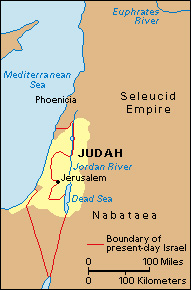
Under Hasmonean rule, different religious groups developed within Judaism. The groups disagreed over such matters as the oral law—that is, the traditional interpretation of the Torah. The Pharisees believed God had revealed the oral law along with the Torah. Pharisees taught in synagogues and were supported by the common people. The Sadducees accepted only the Torah and found support among the rich and the temple priests. A third group, the Essenes, stressed personal holiness through strict rules that included the sharing of property in communities apart from society.
Roman rule.
In 63 B.C., the Romans conquered Judah, which they called Judea. Roman rule generally was harsh. The most famous ruler of Judea, Herod the Great, is known for his ruthlessness and his building projects.
Jesus was a Jew from Judea. The Romans executed Jesus because they saw him as a threat to their rule. Jesus’s followers, who became known as Christians, believed that God had sent Jesus to the world as the Messiah (Savior). But most Jews did not accept Jesus as the Messiah.
The Jews revolted in A.D. 66 and drove out the Romans. But in 70, the Roman general Titus conquered Jerusalem, destroyed the Temple, and took many Jewish captives to Rome. The Western, or Wailing, Wall in Jerusalem is all that remains of the Temple.
Some Jews, called Zealots, refused to surrender even after Jerusalem fell. Many Zealots retreated to a mountain fortress called Masada, where 960 men, women, and children held out for three years. As the Romans were about to conquer the fortress, the defenders supposedly committed suicide rather than surrender.
Under the spiritual leadership of the scholar Rabbi Akiva Baer ben Joseph, a warrior named Simeon Bar Kokhba led the Jews to rebel again in 132 and seize Jerusalem. In 135, the Romans crushed this final rebellion.
The Talmudic period and the Middle Ages
The Talmudic period.
After Bar Kokhba’s defeat, the Romans prohibited Jews from living in Jerusalem. New centers of Jewish learning arose in Galilee, an area in northern Palestine; and in Babylonia. The Sanhedrin, the Jews’ religious lawmaking body, met in Galilee. In about 200, the head of the Sanhedrin, Rabbi Judah ha-Nasi, wrote down the oral law in a book called the Mishnah. From about 200 to 500, other scholars collected interpretations of the Mishnah into a work called the Gemara. The Mishnah and the Gemara together form the Talmud. Two versions of the Talmud were created, one in Galilee (the Palestinian or Jerusalem Talmud) and the other in Babylonia (The Babylonian Talmud). See Talmud.
For centuries, Jews around the world turned to the Babylonian Jewish community for religious and scholarly leadership. Jews sent questions of law and interpretation to scholars at Babylonian rabbinical academies. The greatest such scholar, Saadia Gaon, lived in the late 800’s and early 900’s and headed one of these academies.
The Jews under Islam.
In the mid-600’s, Arab Muslims founded an empire that soon included southwestern Asia, northern Africa, and Spain. The Muslims permitted Jews and Christians to practice their own religions. But Jews and Christians had to pay a special tax and were not equal to Muslims under the law.
Large Jewish communities existed in such Muslim lands as Babylonia, Egypt, Morocco, and Yemen. But the greatest center of Jewish culture arose in Muslim Spain. The period from the 900’s to the 1100’s in Spain is known as the Golden Age of Jewish history. Jews worked as craftspeople, in medicine and science, and in business and commerce. Some rose to high positions in government. Outstanding writers included the physician and philosopher Moses Maimonides, the poet and philosopher Solomon ibn Gabirol, and the poet Judah Halevi.
Jews in Christian Europe.
After the fall of the Roman Empire in A.D. 476, the Christian church became the most powerful force in Europe. In the early Middle Ages (about the 400’s through the 1400’s), the Jews lived fairly peacefully with their Christian neighbors. Many Jews became merchants. Others practiced trades or owned land. Many Christians respected the Jews for their contributions to society. But some Christians blamed the Jews for the death of Jesus and mistrusted them because they would not accept Christianity. Such hatred of Jews, expressed in some early Christians’ writings known collectively as contra Judaeos (against Jews), later became known as anti-Semitism.
The Jews’ situation worsened beginning in 1096, when a series of military expeditions called the Crusades began. These Christian campaigns to liberate the Holy Land from the Muslims, whom the Crusaders called infidels (unbelievers), stirred a wave of intense feeling against non-Christians. The Crusaders killed many Jews and sometimes massacred entire Jewish communities. The Crusades marked the beginning of a long period of Jewish martyrdom (death or suffering for a belief).
Christians saw the Jews more and more as outsiders. Some Christians accused Jews of causing society’s problems. In the mid-1300’s, a terrible plague, now called the Black Death, swept Europe, eventually killing from one-fourth to one-half of the population. Many Christians unfairly blamed the Jews for the Black Death, and mobs killed thousands of Jews. Christians commonly accused Jews of murdering Christian children as part of their religious rituals. This accusation, which became known as the blood libel, was used as an excuse to attack Jews.
Political and religious leaders required Jews in certain areas to wear badges or special clothes that identified them as Jews. In many cities, Jews were forced to live in separate communities that became known as ghettos. Jews also lost the right to own land and practice certain trades. Many Jews became peddlers or moneylenders.
Beginning in the late 1200’s, the Jews were expelled from England, France, and parts of central Europe. Many settled in eastern Europe, especially Poland.
To avoid persecution, some Jews in Spain and Portugal, which had become Christian nations, pretended to convert to Christianity but secretly practiced Judaism. They were called Marranos or Conversos. King Ferdinand and Queen Isabella of Spain established a special court of inquisition to punish such Jewish converts. The court used torture to force confessions from its victims. It was part of the broader Inquisition in Europe, an effort by the Roman Catholic Church to find and punish heretics (people whose beliefs differed from the church’s).
In 1492, Jews who had not converted to Christianity were expelled from Spain. Soon afterward, Jews were forced to leave Portugal. Many Jews fled to what are now Italy and Turkey. Some went to Palestine, where they joined small groups that studied the Kabbalah, the Jewish mystical tradition. This resulted in a revival of Kabbalah in the following centuries.
In the 1500’s, a movement called the Reformation led to the development of Protestantism in Europe. It seemed that the Jews’ situation might improve. But when the Jews failed to convert to the new kind of Christianity, persecution continued, and escalated in some places.
Eastern European religious movements.
Jewish life in Poland flourished in the 1500’s. But in 1648 and 1649, the massacre of thousands of Jews in what is now Ukraine, then a part of Poland, began a time of crisis for Polish Jews. Many hoped for someone to save them.
In 1665, Shabbetai Zevi, a Jew from Smyrna, Turkey, claimed to be the Messiah. Hundreds of thousands of Jews in Europe and the Middle East believed in Shabbetai, but he converted to Islam. Some of Shabbetai’s followers saw his conversion as part of his messianic mission. The Sabbatean movement arose from their belief.
Throughout Jewish history, learning and study had formed the foundation of Jewish life and culture. In the mid-1700’s, a movement called Hasidism developed among Jews of eastern Europe. Hasidism, founded by a Polish teacher known as Ba’al Shem Tov, stressed joyful worship over the study of the Talmud. Most followers of Hasidism, called Hasidim, were ordinary people. Opponents of Hasidism, called Mitnaggedim, saw Hasidism’s noisy praying and dancing as undignified. They also looked down on the Hasidim as uneducated. Today, some Jews in Europe, Israel, and the United States still practice Hasidism.
The modern world
Emergence into freedom.
About the time that Hasidism developed in eastern Europe, a movement called the Haskalah (Enlightenment) arose in central and western Europe. Founded by German Jewish philosopher Moses Mendelssohn, it urged Jews to modernize their religious thinking. It stressed the importance of nonreligious, as well as Jewish, education. See Haskalah.
As the Haskalah modernized Jewish religious thinking, other forces were working to free the Jews from discrimination. In France, the ideas of liberty and equality that took hold during the French Revolution (1789-1799) led many Christians to demand equal rights for all. French Jews were emancipated (given equal rights) in 1791. The French general and emperor Napoleon Bonaparte brought the idea of emancipation to countries outside France. By the end of the 1800’s, most western and central European Jews had been emancipated.
During the early and mid-1800’s, two new branches of Judaism developed. They were called Reform and Conservative. See Judaism (The branches of Judaism).
Jews in America.
The first Jews to arrive in the American colonies settled in New Amsterdam, a Dutch settlement that later became New York City, in 1654. Jews also established sizable communities in Charleston, South Carolina; Newport, Rhode Island; Philadelphia, Pennsylvania; and Savannah, Georgia. During the American Revolution (1775-1783), many Jews fought in the colonial army. A Jewish financier named Haym Salomon gave much of his fortune to help the newly established United States government. Jews had full legal equality in the new nation, and many Jews immigrated to escape anti-Semitism in their native lands. By the 1920’s, U.S. Jews were the largest and most secure Jewish community in the world, though they still suffered discrimination.
The growth of anti-Semitism.
During the late 1800’s, anti-Semitism became a powerful force in European politics, especially in Austria-Hungary, France, and Germany. Many anti-Semitic writers tried to prove that Jews were inferior to Germans and other northern European peoples, whom the writers called Aryans.
Jews also suffered from anti-Semitism in eastern Europe, where they never had been emancipated. In Russia, Jews were crowded in an area along the western border called the Pale of Settlement. Beginning in 1881, many Jews were killed in a series of massacres called pogroms. The pogroms caused hundreds of thousands of Jews to flee to the United States. Some fled to Palestine.
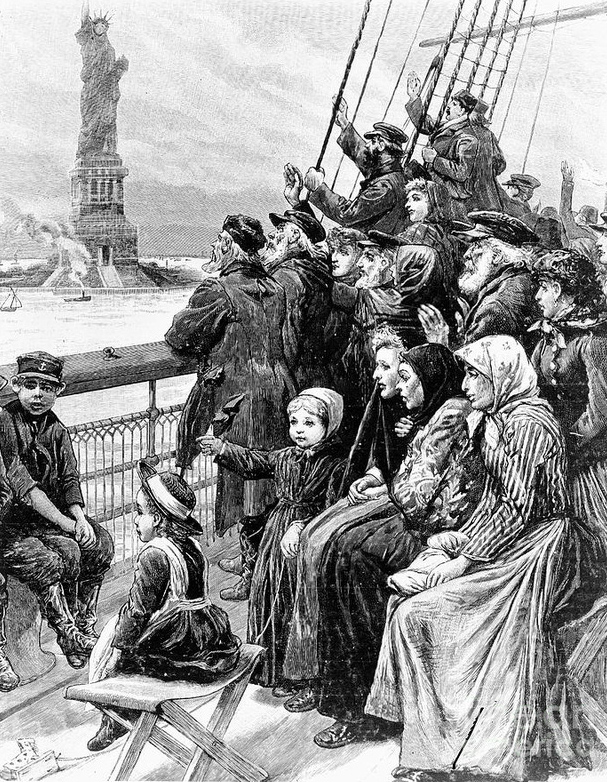
The Zionist movement.
Many Jews saw an independent Jewish state in Palestine as the best escape from anti-Semitism. They established a movement called Zionism to establish such a state. In the late 1800’s, Palestine was a poor, thinly populated region ruled by the Muslim Ottoman Empire. Most of the people were Muslim Arabs, though small numbers of Christian Arabs and Jews also lived there. The Zionists bought land in Palestine and established farming communities called colonies. The first modern Jewish city, Tel Aviv, was founded in Palestine in 1909.
In 1894, the trial of Alfred Dreyfus, a French army officer and Jew who had been falsely accused of treason, helped convince Theodor Herzl, an Austrian Jewish journalist, that Jews could never be secure until they had a nation of their own. In 1897, at the First Zionist Congress, Herzl organized the Zionist movement on a worldwide scale.
During World War I (1914-1918), some Jews in Palestine fought with the United Kingdom against the Ottomans. In 1917, the United Kingdom issued the Balfour Declaration, supporting the idea of a Jewish national home in Palestine. The British also promised Arab leaders support for an Arab state. The Arabs believed this state would include Palestine. After World War I, several Allied nations occupied the Ottoman Empire. The League of Nations, created to keep peace after the war, in 1920 gave the British temporary control of Palestine. Palestine became a mandated territory of the United Kingdom. In the 1920’s and 1930’s, Jewish immigration to Palestine increased, despite Arab opposition. See Palestine (World War I and the Balfour Declaration).
Beginnings of Nazi persecution.
Germany’s defeat in World War I and a worldwide economic depression in the 1930’s left the German economy in ruins and made many Germans angry and resentful. Adolf Hitler, leader of the Nazi Party, came to power in 1933. He blamed the Jews for Germany’s troubles and began a vicious campaign against them. In 1935, the Nazis deprived German Jews of citizenship. They seized Jewish businesses and destroyed synagogues.
Many Jews fled Germany. Others were trapped because no country would admit them. Most nations had restrictive immigration policies. The Immigration Act of 1924, also called the Johhson-Reed Act, limited immigration to the United States from areas outside the Western Hemisphere, including eastern and southern Europe. Beginning in 1939, the United Kingdom bowed to Arab pressure and limited immigration to Palestine. This policy became known as the White Paper of 1939.
The Holocaust.
World War II began in 1939. The Nazis soon conquered large parts of Europe, bringing most European Jews under their control. The Nazis then began a campaign, called the “final solution,” to exterminate all Jews. Firing squads shot and killed more than 1 million Jews. About 4 million more were killed in concentration camps. Many others died from disease and starvation. By 1945, about 6 million Jews—two-thirds of European Jews—had been murdered.

Several Jewish revolts against the Nazis took place in ghettos, slave labor camps, and death camps. The most famous revolt occurred in 1943, in the Warsaw ghetto. Although the Jews were surrounded and poorly armed, some held out for about four weeks. Many Jews who managed to escape the ghettos joined bands of fighters called partisans who performed acts of sabotage.
Many of the people in occupied countries were indifferent to the Nazi campaign to exterminate Jews. Some helped the Nazis. But some non-Jews risked their lives to save Jews. Swedish diplomat Raoul Wallenberg saved about 100,000 Hungarian Jews. The Danish underground saved 7,000 Jews, most of the Jews of Denmark.
The rebirth of Israel.
The Holocaust left the Jewish people wounded in spirit and greatly reduced in numbers. But from the tragedy grew a new determination to establish a Jewish state in Palestine. The Arabs there continued to oppose this plan, and violence often broke out between Arabs and Jews. In 1947, the United Nations passed a resolution calling for the division of Palestine into Arab and Jewish states. A Jewish state, which called itself Israel, declared its independence on May 14, 1948. The next day, neighboring Arab countries invaded Israel. Israel defeated the invaders, and hundreds of thousands of Jews flocked to the new Jewish state.
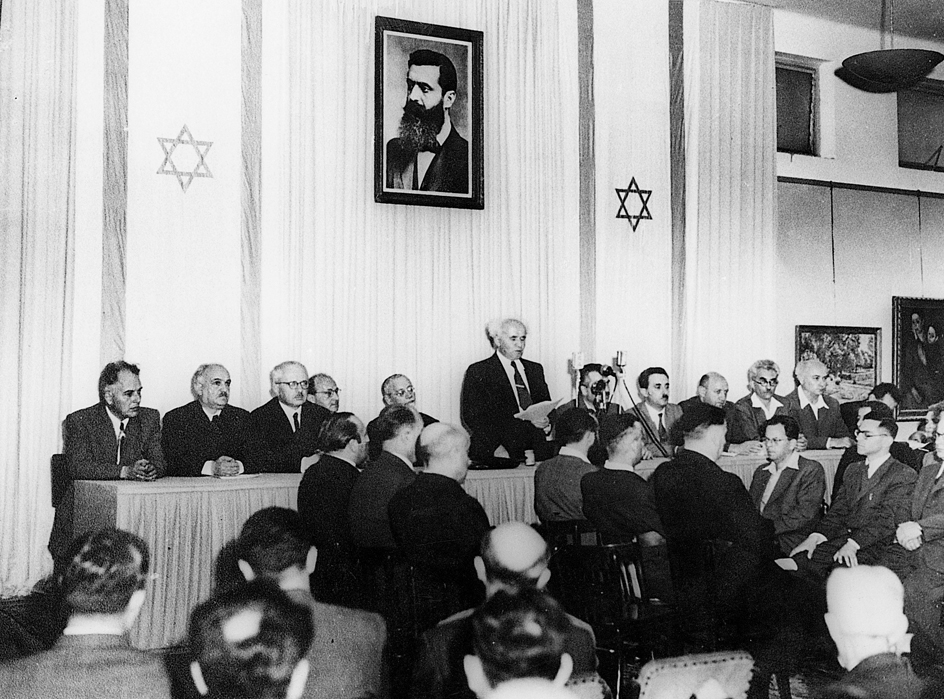
The Arabs continued to oppose Israel, and full-scale wars broke out in 1956, 1967 (the Six-Day War), and 1973 (the Yom Kippur War). However, despite its constant struggle with its neighbors, Israel maintained a democratic form of government and became one of the most prosperous countries in the Middle East.

The late 1900’s.
For many years, the main centers of Jewish life in the Diaspora were the United States and the Soviet Union (U.S.S.R.). Jews in the U.S.S.R. suffered widespread discrimination. The government discouraged religious practice and restricted emigration. In the 1970’s and 1980’s, Soviet Jews drew worldwide attention with demonstrations demanding the right to observe Jewish customs and to emigrate. In 1987, the government began to permit an increasing number of Jews to emigrate to Israel. The Soviet Union was dissolved in 1991. From the mid-1980’s to the early 1990’s, hundreds of thousands of Jews moved to Israel from the U.S.S.R., then from former republics of the Soviet Union, including Russia and Ukraine.
Israel also absorbed thousands of Ethiopian Jews following “Operation Moses.” From November 1984 to January 1985, the Israeli government airlifted these Jews from refugee camps in Sudan and brought them to Israel. The large number of immigrants in the late 1900’s led to overcrowding and unemployment in Israel.
The Jews today
continue to thrive, both in Israel and the Diaspora. However, they face various challenges. For example, the Jews of Israel still face the threat of conflict with neighboring Arab states. They also must confront the military, moral, and social issues stemming from the ongoing conflict with Palestinian Arabs living in lands occupied by Israel. See Israel (The 2000’s.).
In the United States, Jews increasingly have adopted American culture. A growing number of U.S. Jews do not practice traditional Judaism, and many know little about Jewish traditions or history. Some Jews fear that this process, called assimilation, will cause Jews to lose their identity. A rising rate of interfaith marriage also contributes to this concern.
However, many other American Jews are experiencing a renewed interest in their heritage. There is a revival among young U.S. Jews who are finding new ways to express their Jewish identity. While many synagogues have shrunk, other, independent prayer and ritual communities have emerged. Many such communities function without clergy and are led by lay people. Small but constant numbers of Americans send their children to Jewish day schools of various denominations. In addition, interfaith marriage has resulted in increasing numbers of non-Jews associating with and becoming part of America’s diverse Jewish communities.
